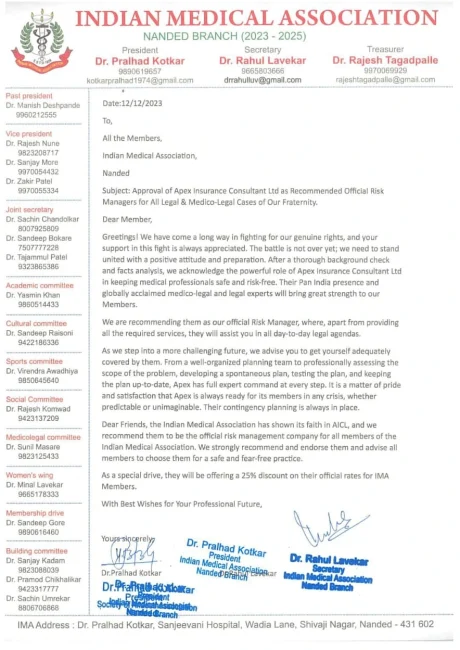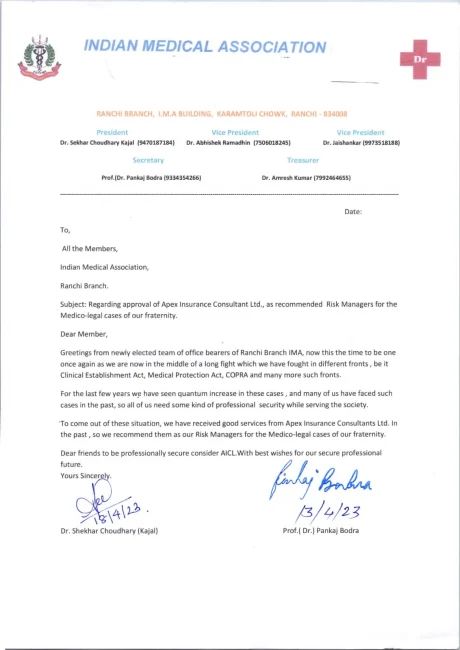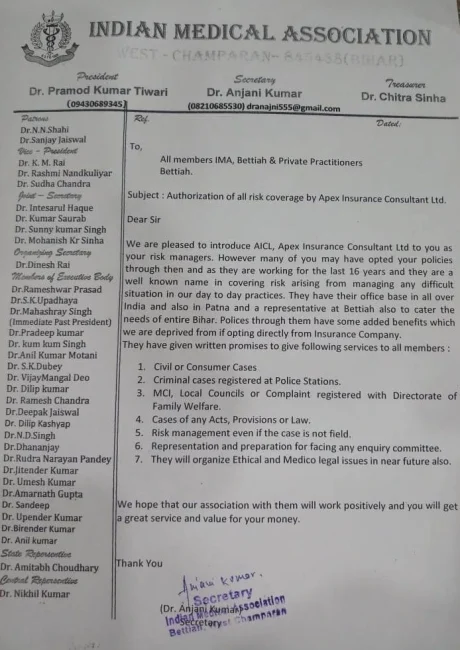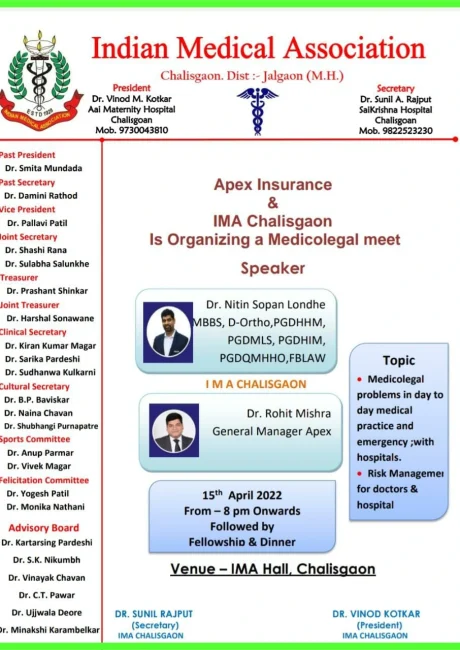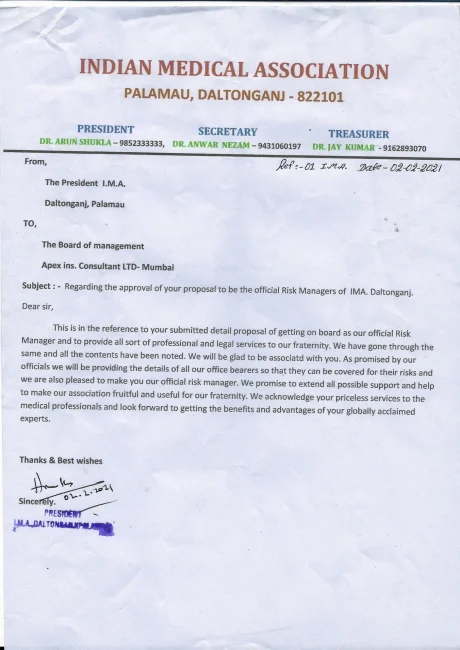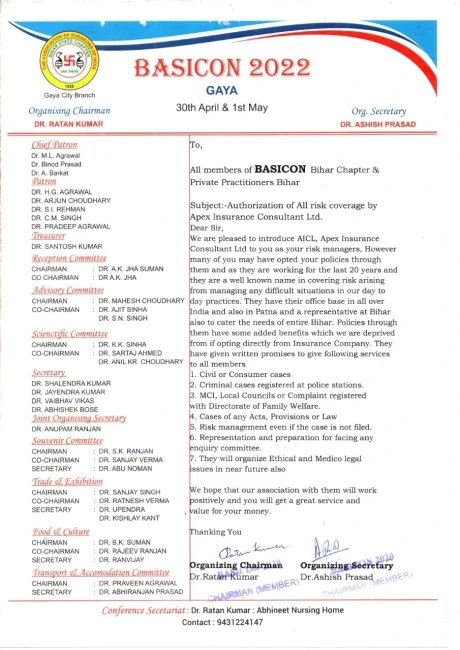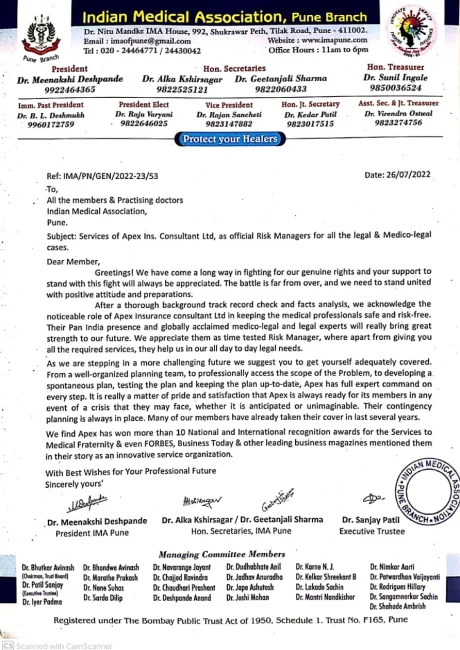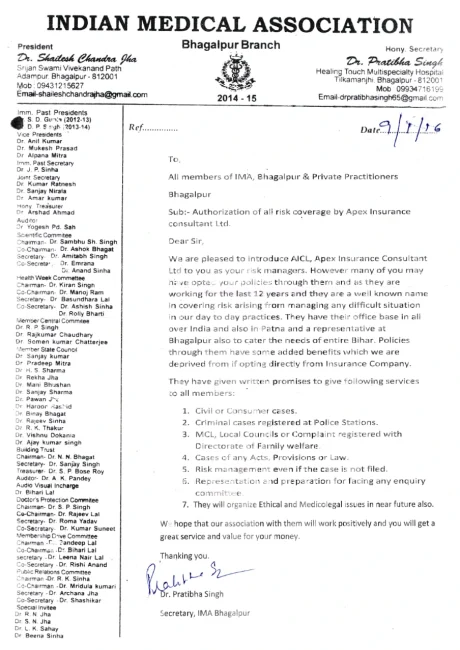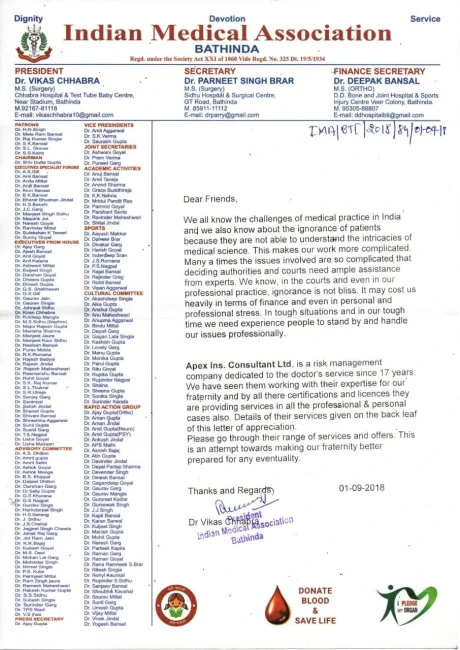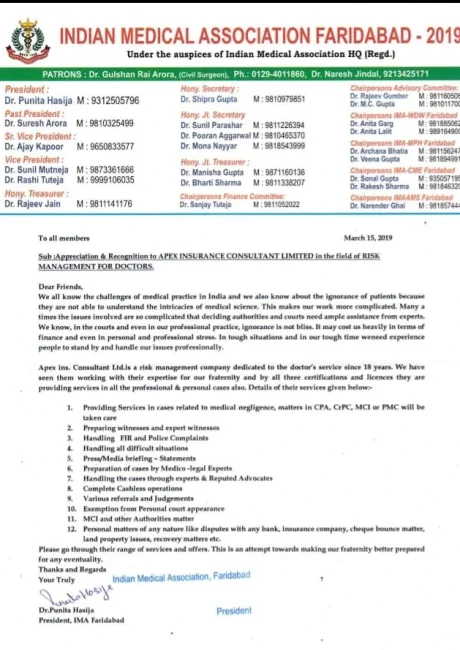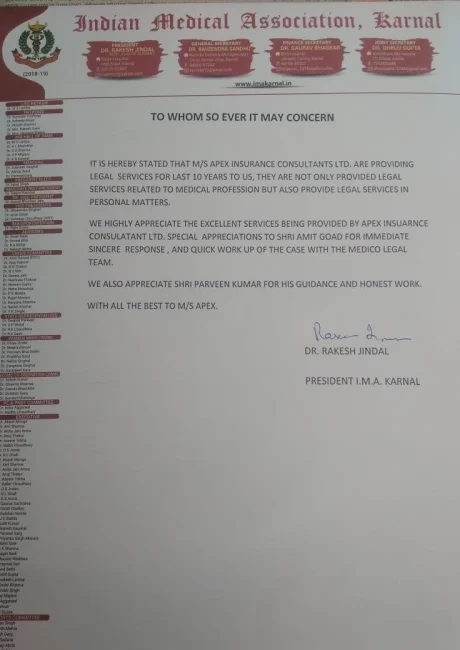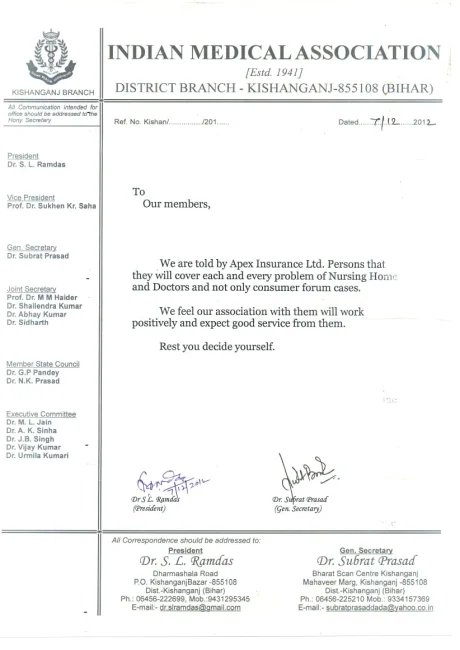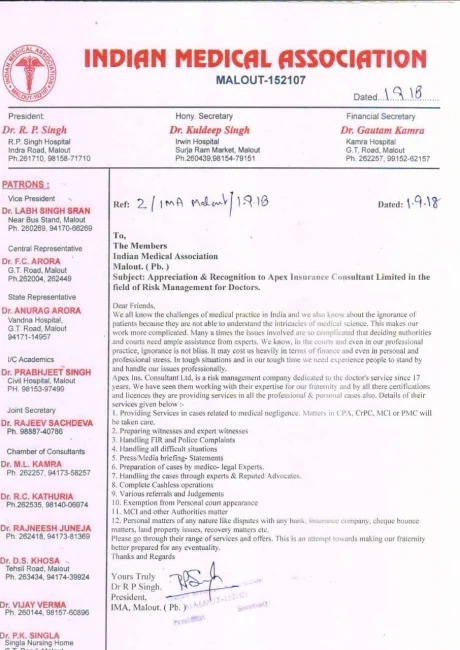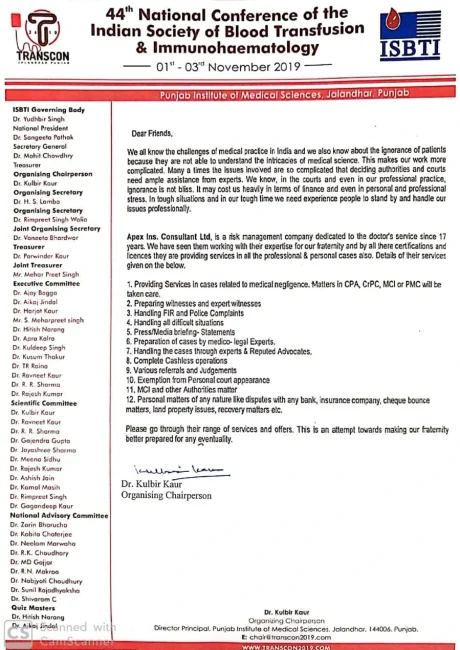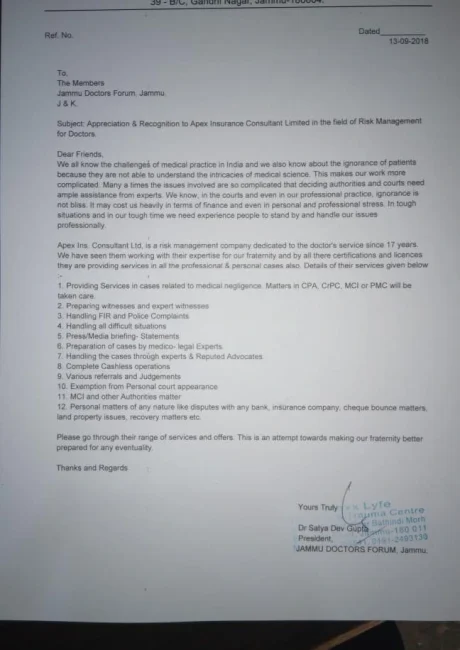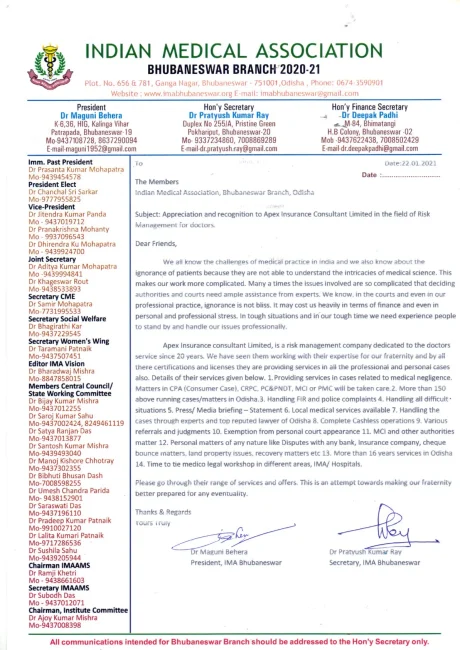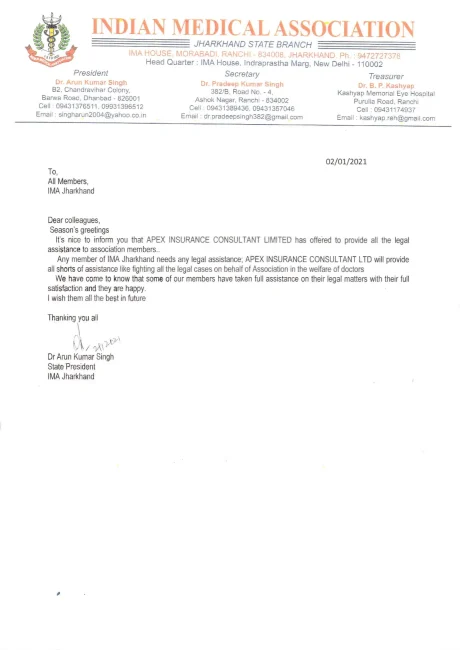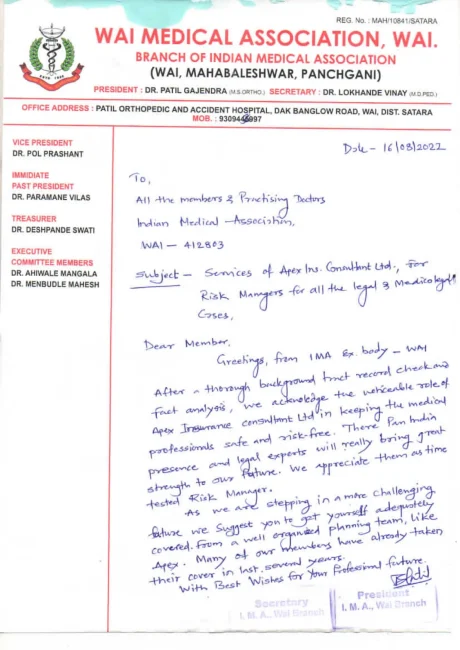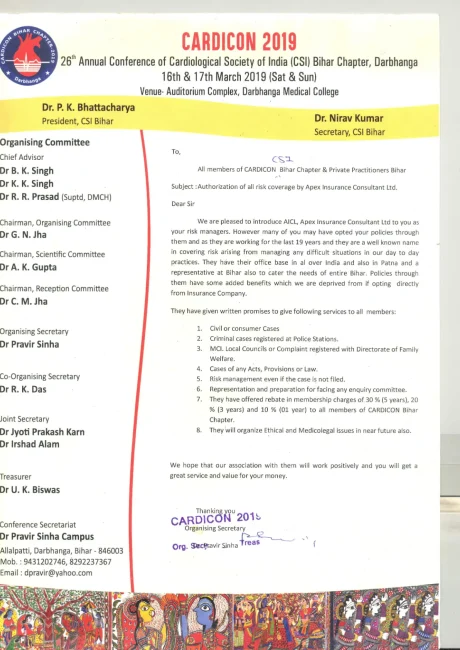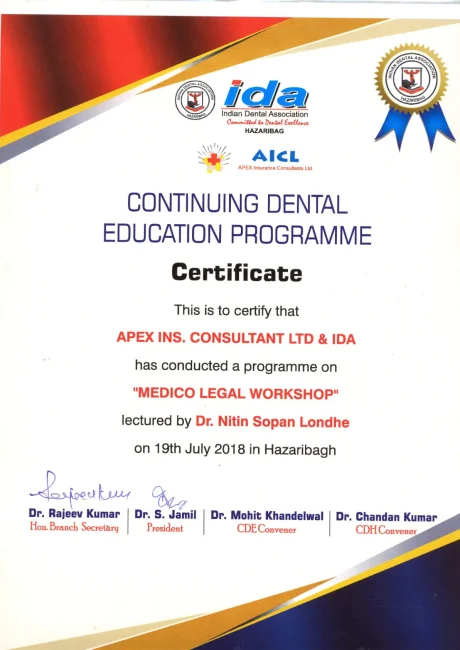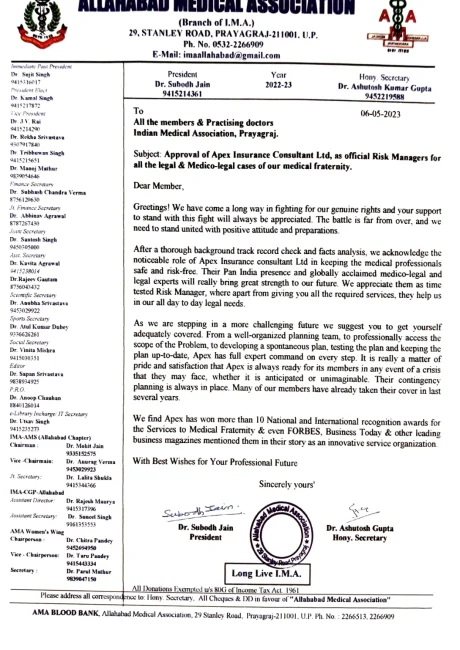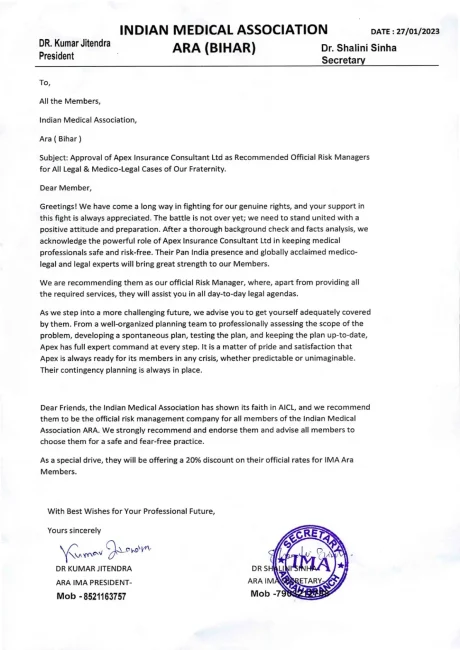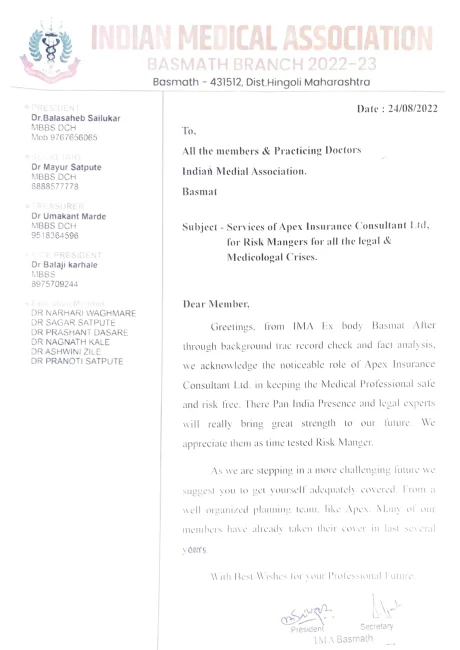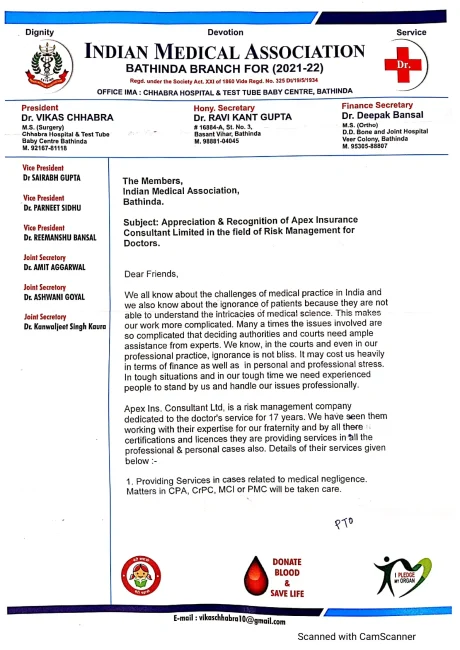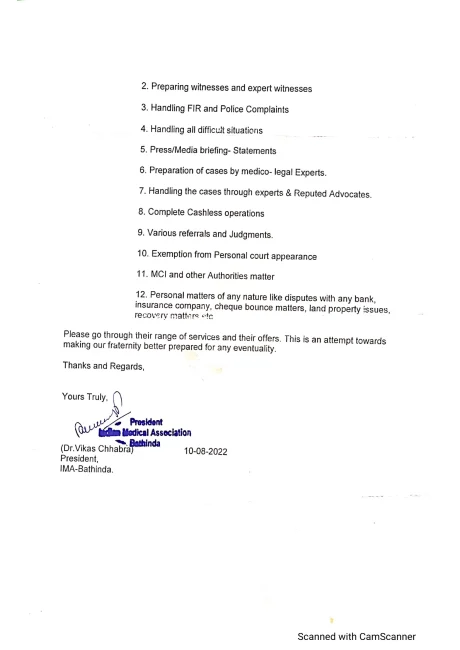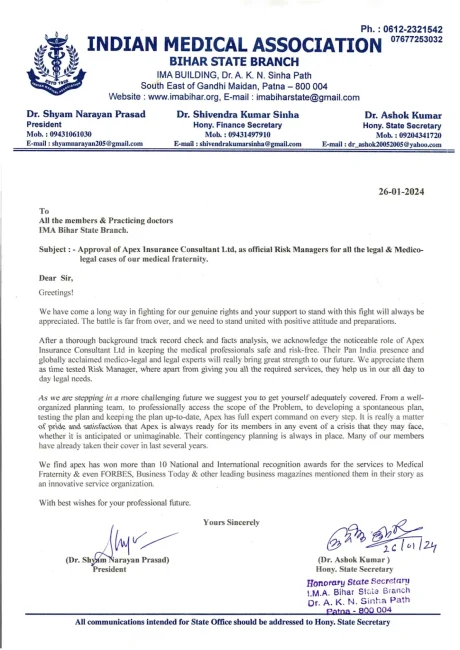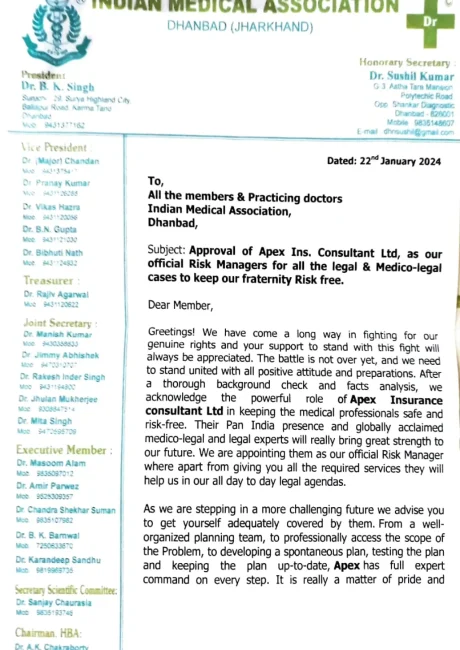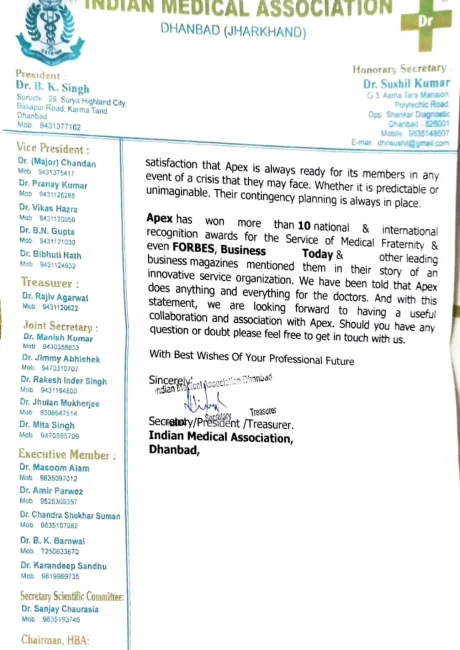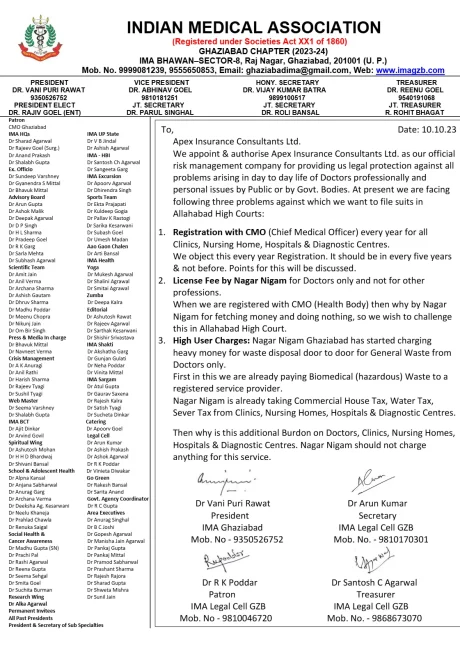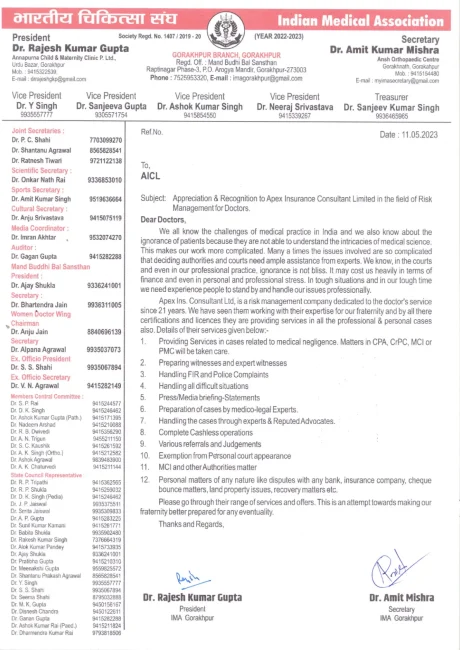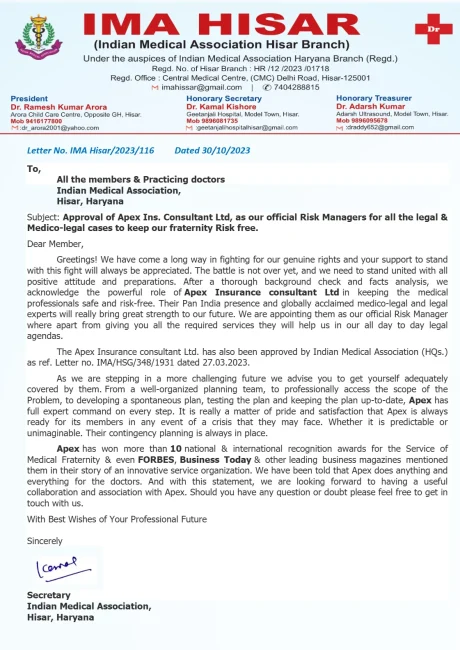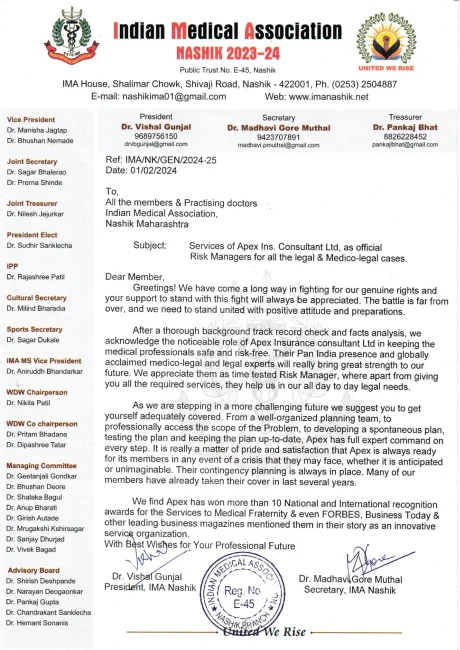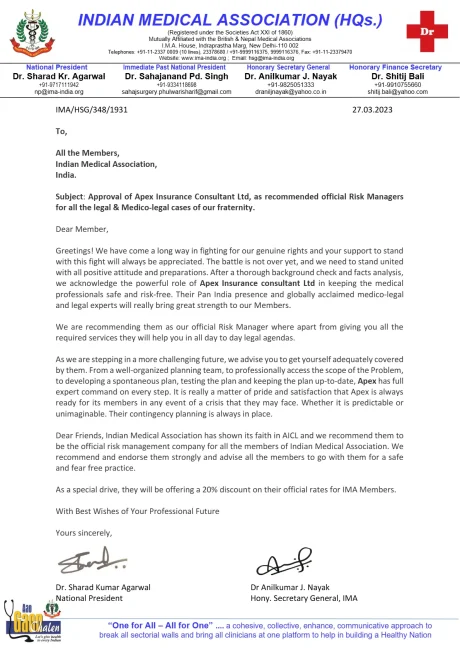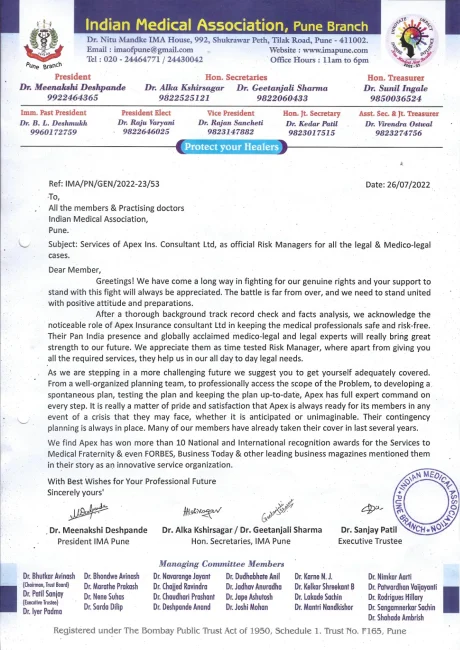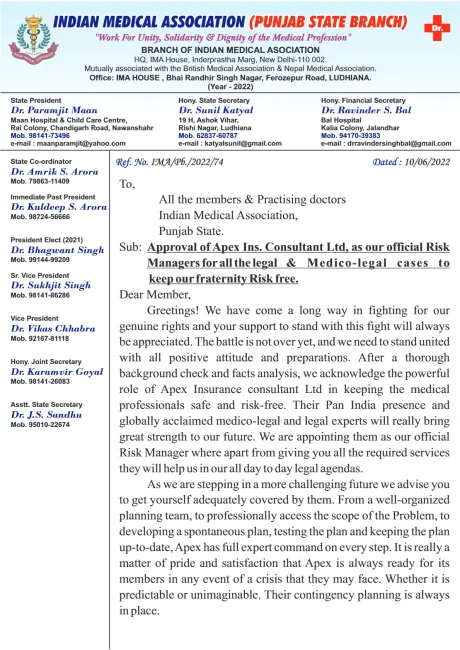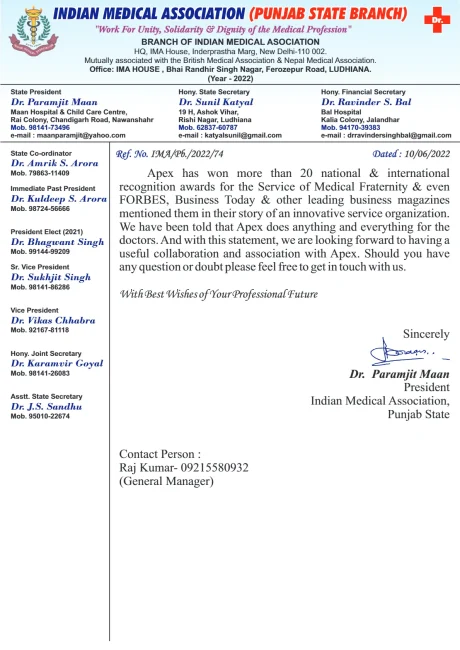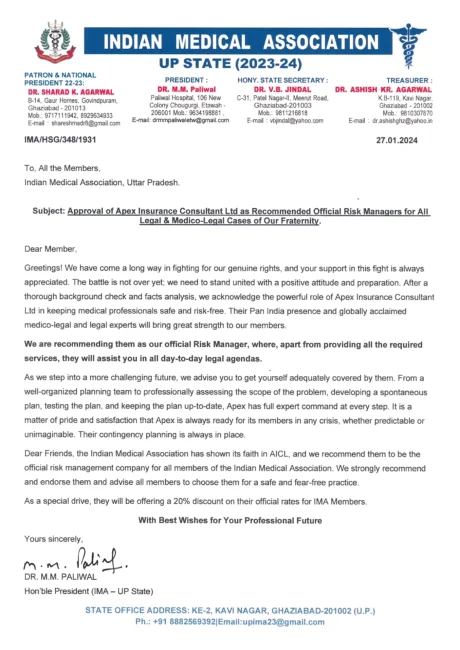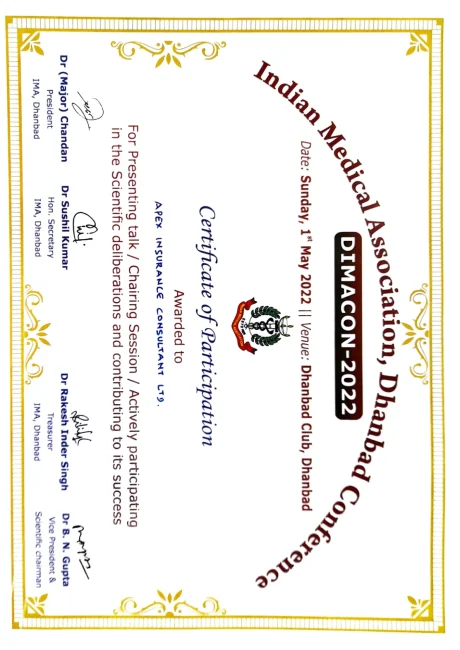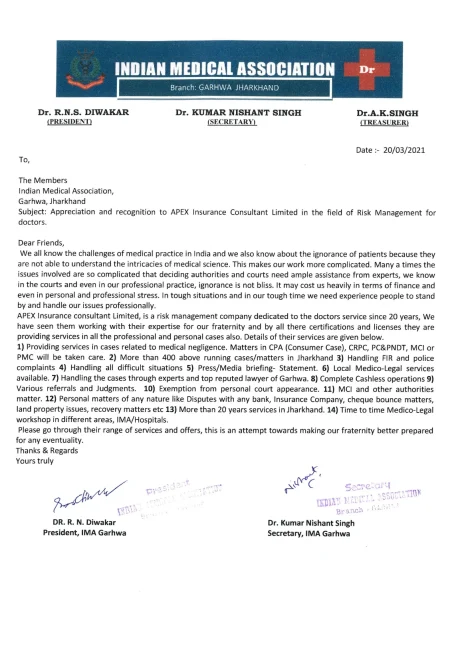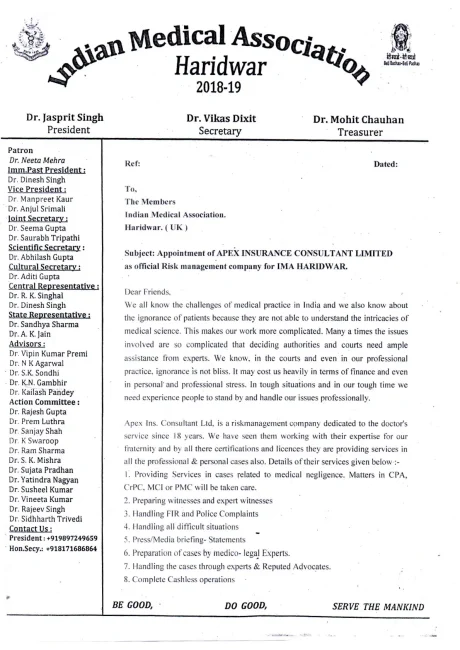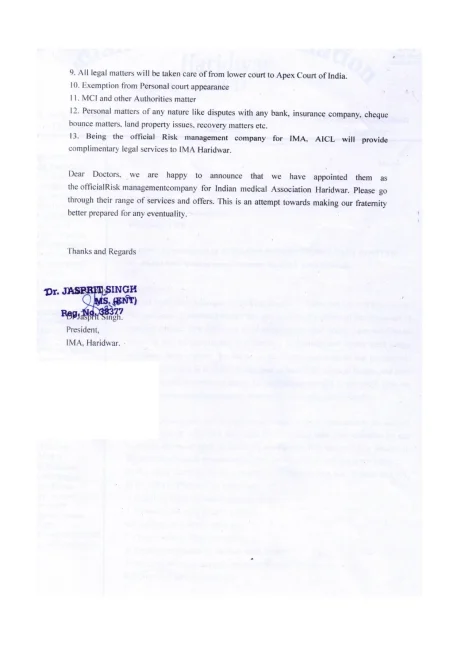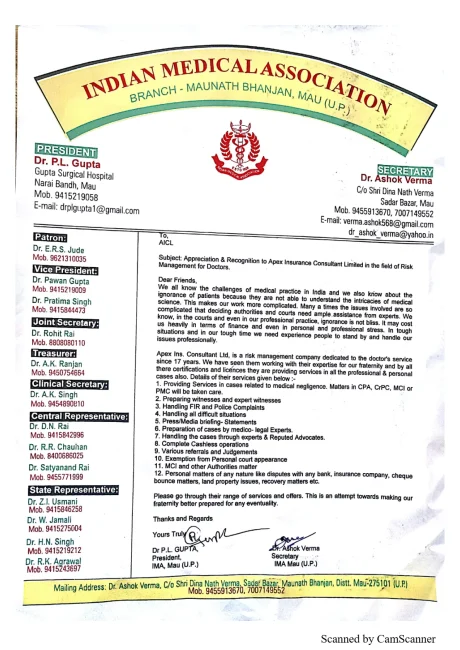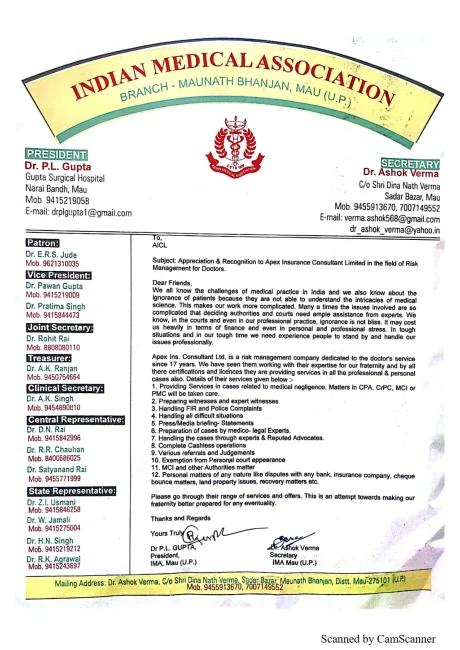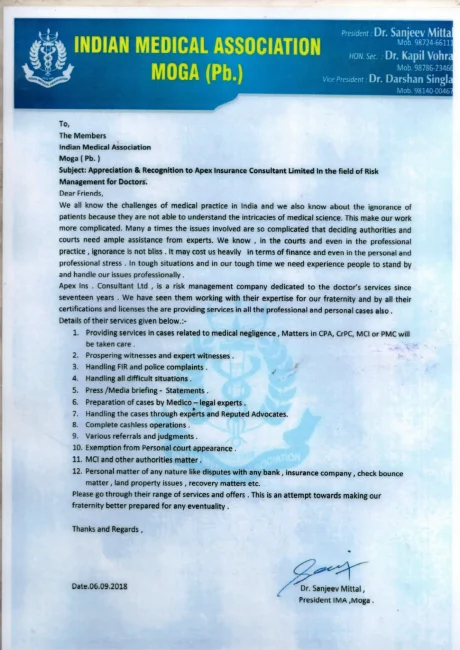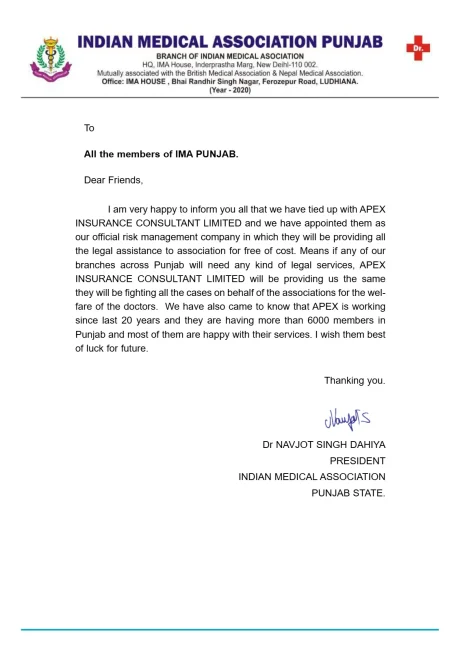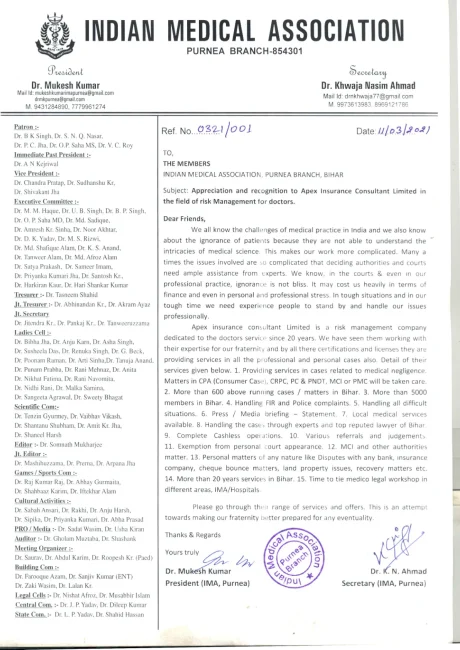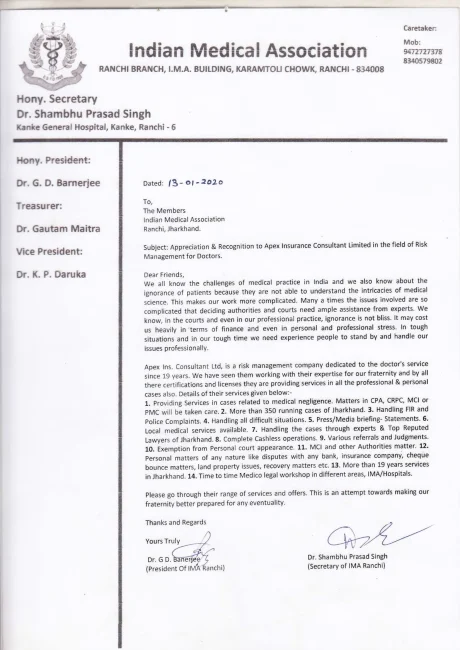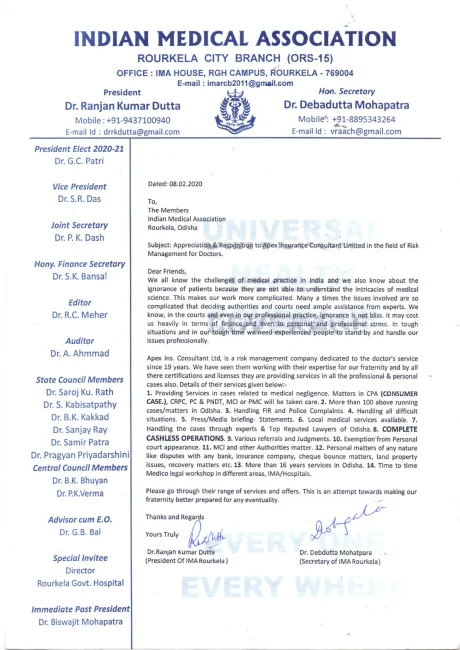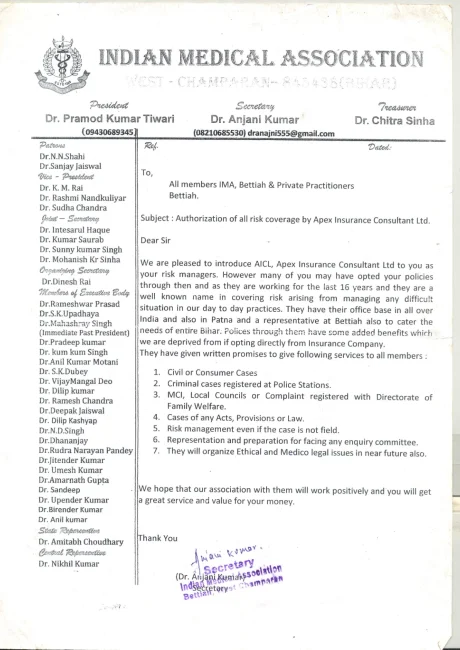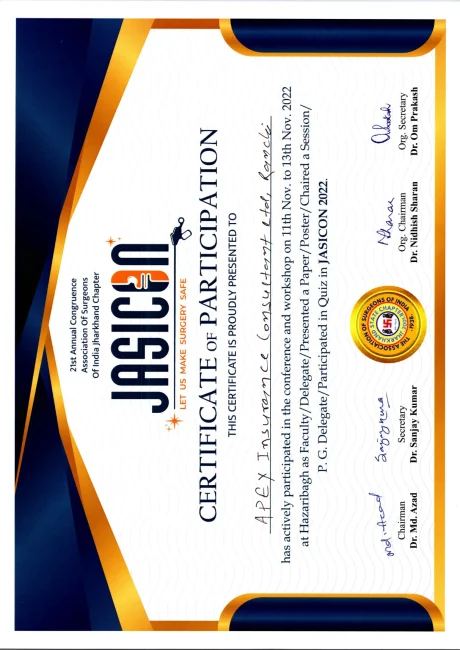By Dr. Mahesh Baldwa,
M.D, D.C.H, LL.B, LL.M, Ph. D (law)
MEDICOLEGAL SPECIALIST & ADVISOR
Formerly Assistant Professor of Pediatrics at T.N. Medical College and Nair Hospital, Mumbai-400008
Ex. Asst. Professor JJ Hosp, Grant medical college
Professor, paper setter & examiner of law to postgraduate students of University Department of Law, University of Mumbai
Baldwa Hospital, Sumer Nagar, S.V. Road,
Borivali (West)Mumbai 400 092
There are four Fundamental Issues in Medical Law and they are
- Consent 2. Confidentiality 3. Standard of medical care 4. Duty of medical care towards whom
- CONSENT
A consent should be patient specific, procedure specific, with full disclosure about disease, its investigations and treatment without hiding anything, without misrepresentation, coercion, fraud, undue influence in writing and signed by authorized signatory which is witnessed by two adult people is good enough.
Any person who has completed 18 years of age as per Indian Majority Act-1975 is considered an adult. An adolescent is less that 18 years old so legal adult status for him is a far-fetched legal dream but at the same time parents and adult relatives cannot arrogate[i] with adolescent rights.
Adolescents whose parents/guardians are not known, for example street adolescent/child is brought sick needing medical/surgical attention then medical professional needs legal permission from court for medical interventions. The legal rule is that law court of appropriate jurisdiction is the designated guardian of such children under Guardians and Wards Act, 1890[ii]. Police or doctor needs to apply permission to court as per prescribed procedure. Usually court gives very specific permission and not a blanket permission for medical interventions for such an adolescent.
Medical Definition of Informed Consent, Assent, Dissent, Forewarning, Refusal of Medical professional Advice
Informed consent means doctor taking relevant information from patient and giving relevant information to patient concerning a particular ailment / problem of adolescent and parents/guardian.
1. Medical professional take information from patients so it guides them in doing relevant physical examination and if needed relevant investigations.
2. Based on working diagnosis medical professional’s advice drug and / or non -drug treatment prescribed. Then further evaluation of provisional diagnosis and / or monitoring of progress of disease done. While this is being done medical professional in tandem advices investigations to evaluate recovery or worsening of disease vis a vis warn about side effects, adverse effects, complications of drug and / or non drug and / or surgical treatment. All this algorithmic exercise of monitoring is done by medical professional to constantly reducing health risks from disease /drugs and surgery
3. Therefore a short definition of consent is “doctor agreeing to give Information or advice or warning to adolescent patient’s natural parents/ guardians / court who in turn agree with doctor. Such an agreement in legal parlance is consent or risk bond.
4. Assent is one sided, part consent of patient, means agreeing to few advices of doctor and dissent means one sided part disagreement with medical professional advice e.g., patient with inguinal bubo caused by sexually transmitted disease, agrees to drug treatment but disagrees to surgical incision and drainage.
5. Forewarning (currently we use word “counseling”) is needed where patient is likely to spread disease, or likely to commit suicide when HIV positivity is diagnosed.
6. Refusal of treatment by parents of adolescent needs documentation. Refusal of treatment has so many reasons but common ones are “want of money”, fear of surgery e.g. medical termination of pregnancy in a female adolescent who expects that doctor should give some abortifacient medicine and refuse for surgery or MTP under anesthesia. Documentation of refusal allows doctor as well as patient’s parents to refocus and understand the root cause of refusal.
- CONFIDENTIALITY CAN BE PROMISED ON CERTAIN ISSUES
One can promise confidentiality to adolescents in almost all matters, including most types of treatment, whether with or without drugs, counseling and forewarning. However, one must be careful about promising confidentiality with regard to matters like examination to ascertain sexual abuse, sterilization, contraception, promiscuity, HIV infection and related issues. Counseling and tactful handling are required in these cases to mitigate social stigma and parental wrath. Disclosure to parents is important in Indian context because if the treating doctor does not disclose to the parents then they will take it ill and blame the doctor that in spite of knowing certain intimate issues about their child, the doctor was duty bound to inform the parents. In tackling cases of attempted suicide, one needs to weigh the advantages and risks of disclosure over non-disclosure (confidentiality) to save the life of an adolescent from committing suicide.. Exceptions to non-disclosure are, surgical procedures like medical termination of pregnancy (MTP) This is because Indian law considers pregnancy among adolescents as the outcome of rape If doctor does not discloses about MTP, then police may howl up the doctor for hiding illegality under Section 202 of IPC. This is because rape is an offence under Sections 375 and 376 of the IPC.
The following situations may be a source of legal trouble for doctors while dealing with adolescents, if the police is not informed.
- Hiding a case of pregnancy in a minor (less than 18 years of age)
- Carrying out MTP in a minor without obtaining the permission of a parent, guardian or court, and carrying out MTP in a girl posing as a major and accompanied by a boyfriend posing as her husband
- Carrying out an abortion procedure in a minor in her second trimester may pose the problem of how to dispose of the foetus. If it is found in the garbage, the doctor may be charged under Section 318, along with Sections 312,313,314, and–315, of the IPC.
- If a minor delivers and the doctor gives the baby to an unfertile/sterile couple without following the due procedure of adoption, then she/he may be charged with stealing/theft (Section 379) or cheating (Section 420). Worse still, if the baby is shown to have been born to the unfertile couple and not to the minor girl, he can be charged for murder under Section 302! (Murder).
- The facts and circumstances and statements given to the police by adolescent girl, her parents, doctors explanations shall force the police to change IPC section. Some of the Sections of IPC against doctors are cognizable and non-bailable. Mind well for all these non-bailable offences doctor needs to obtain anticipatory bail under Section 438 of the CrPC.
- STANDARD OF CARE
in a case of medical negligence, the first question that always comes to my mind is that in the given facts and circumstances of the case of alleged medical negligence what is the legally acceptable medical standard of care or simply let us say ‘standard of care’? Because all of us know very well that if the doctor has followed that ‘standard of medical care as prescribed’ he is not negligent otherwise he is negligent.
Hence it is plain simple thing that one who does not follow “standard of car” may be hauled up with alleged medical negligence. The courts look for evidence whether doctor has failed to provide the medically prescribed standard of care which is legally unacceptable.
‘Standard of care’ components
The first component of standard of care is
- The doctor must have the requisite qualification and registered with statutory medical council. Do not claim or attempt to treat a patient outside your qualification, skill or expertise. (Regulation 2.1.1 – Ethics, 2002)A doctor must always ensure that he is competent before accepting a patient. During treatment if due to any complication or even otherwise it comes to the notice that the patient is outside expertise, immediately refer the patient to the appropriate consultant. In case of doubt, at least involve the other consultant or take a second opinion.
- Doctor is allowed to practice the kind of “pathy” he has undertake to study and got registration from statutory medical council i.e. allopathy, homeopathy, ayurvedic, unani or siddha.
- Doctor while treating must exercise requisite care and diligence. One who has no qualification as prescribed above is negligent per say.
- Let us examine one case law from England which is acceptable in india as well. A case was decided by Queens Bench Division – Bolam v/s Friern Hospital Management Committee- [1957] 2 All E. R. 118 To understand this ‘standard’ we will discuss a case that happened in one corner of England, somewhere in the year 1954. A patient named Bolam, was given electric shocks in a hospital named Friern Hospital. Bolam was suffering from depression and was advised electric shocks. When the shocks were administered at the hospital, Bolam lay in a supine position and his lower jaw was supported on a mouth gag by a male nurse. He was not restrained in any other way though two other male nurses were also standing on each side. No relaxant drugs were administered to Bolam before shocks. During shocks, he reacted violently, suffered several physical injuries and hence sued Friern hospital for negligence. These are the undisputed facts of this case. Bolam made two allegations
- Failure to use relaxant drug before giving shock and
- less manual control during shocks
Bolam alleged that the aforesaid were standard practice and these would have completely excluded the risk of fracture.
As far as the first allegation was concerned, the hospital’s defense was that there was a remote risk of fracture if a relaxant was not given but there was an equally remote risk of death, as the relaxant is administered along with an anesthetic drug. Hence according to their clinical judgment, they did not administer a relaxant to the patient. Doctors supporting the ‘relaxant’ school, as well as those who took a contrary view, i.e., supported the hospital’s viewpoint, stepped into the witness box.
Again, on the second allegation of greater manual control, there were diverse opinions. One set of opinion amongst doctors was that increase in manual control increases the chances of fractures, while the others held the opposite view.
The jury gave its verdict in favor of the hospital and held that this was not negligence since the treatment was as per acceptable medical and legal standard.
Now we have Bolams Law or bolams principle which says, diverse medical opinions, even if a particular is in minority, is acceptable to law. It states that
– Law accepts that in the science of medicine even diametrically opposite views may exist.
It states that
– all these different views are acceptable to law.
It states that
– the fact that a particular opinion is in minority is immaterial.
It states that
– What is material is the fact that a respectable minority follows or agrees to a particular course and that particular course is also acceptable to medical science. This is the minimum standard that is expected from all doctors by law.
To summarize, the standard of care can be stated in simpler terms.
- A doctor must act as other doctors of the same specialty would have acted in same or similar situation.
- The fact that others would have acted differently or the majority does not subscribe to a particular course is simply irrelevant. In fact the courts have gone to the extent of accepting that doctors may even have their personal preferences. Chhattisgarh Consumer Commission – R. B. Shrivastava v/s Apollo Hospitals. In one interesting case, the patient underwent angioplasty twice and was later advised bypass surgery which was performed in another hospital. The patient alleged in court that another patient with similar problem in the same hospital underwent bypass surgery directly whereas he was advised angioplasty twice only to extract money. The court rejected this allegation. One of the reasons given by the court was that both the options were acceptable to medical science BUT both the patients were under different consultants, and both the consultants could have personal preferences.
- An injury, death, complication or unfavorable result of treatment will not necessarily mean that the doctor has deviated from the standard of care.
This is the standard of care and it must be applied in all aspects of medical practice – history taking, physical examination, investigations, interventions, diagnosis, surgery, medical treatment and prognosis.
When in dilemma about standard of care as per ‘Bolams Law’
- Consult peers and refer to standard texts in case of doubt.
- Read and look at literature relevant to medical science with respect to case at hand
- patients and the doctors, produce only two types of evidences to prove standard of care in the court:
First – another doctor of the same specialty, someone whom the courts refer to as ‘medical experts’ and
Second – medical literature.
Two more cautions:
- Now a days the latest judicial trend in Indian courts is higher Standard of care expected from a specialist is higher. A specialist is expected to give a higher standard of care than a non-specialist.
- Greater degree of care is expected for legally incompetent patients. Similarly in case of incompetent patients, like children, lunatics, etc – greater the disability, greater is the degree of care expected by law from doctors. Greater degree of care is expected for incompetent patients.
- DUTY OF CARE
Duty of care is also known as legal Doctor-patient relationship
The next logical question is who amongst the patients are entitled to this standard of care. All or only some? The answer is – A doctor is under a legal obligation to provide the ‘standard of care’ only to those patients to whom the doctor owes the “duty of care”. Not anyone and everyone whom the doctor meets or speaks, even if this conversation is regarding medicine. The legal obligation of duty of care is where legal Doctor-patient relationship is established.
Doctor-patient relationship is a pure ‘contract’ in law. So both have to agree for this relationship – and that too voluntarily. It arises the moment a doctor agrees to provide his or her professional services to the patient and the patient accepts this offer. The patient by stepping into the doctor’s clinic or hospital demonstrates acceptance. Consequently the patient also has another legal duty i.e. to pay the professional fees of the doctor but that is not the subject matter today.
Word of caution:
Nowadays, patients are found to be going to the courts with allegations of medical negligence only to avoid payment of fees. The courts are also taking note of this epidemic. Keep this in mind. Secure your fees first.
Duty of care arises in physical / telephonic / web consultations and emergencies. Duty of care may arise
- By a physical consultation
- By a telephonic conversation or web consultation or
- By legal compulsion to provide treatment i.e. in case of emergencies.
A doctor has a right to choose his / her patient. (Regulation 2.4 – ETHICS, 2002) A doctor retains the right to choose his or her patients. Ultimately, treatment today is a pure contract between two consenting adults and cannot be forced on a doctor. A doctor is therefore well within his right to refuse treatment to a patient at the outset. A doctor has a right to choose his / her patient. (Regulation 2.4 – ETHICS, 2002)
Once the duty of care has arisen, it continues till the happening of any of the following contingencies:
- The patient is relieved of the ailment.
- The patient is discharged or transferred (in case of an IPD patient).
- The patient voluntarily seeks discharge from the care of the doctor – discharge against medical advice.
- The doctor terminates his treatment on valid grounds after giving proper notice.
- The patient is dead.
- In case of emergency patients, the emergency ceases to exist.
Some perfectly legal and valid reasons for termination are as follows:
- Failure of patient to pay
- Failure of patient to show up for appointments
- Refusal by the patient to give consent for any procedure that in the opinion of the doctor is life-saving and absolutely necessary
- Refusal by the patient to allow implementation of the treatment plan
- Refusal by the patient to follow instructions
- Doctor’s change of practice
- Doctor’s abandonment of practice
Duty of care during emergency
a “duty of care” on each and every doctor to attend emergency patients. Parmanand Katara v/s Union of India – This duty was cast on the doctors by the Supreme Court in the case of Parmanand Katara v/s Union of India wherein it was stated, “Every doctor whether at a government hospital or otherwise has the professional obligation to extend his services with due expertise for protecting life, the obligation being total, absolute and paramount.”
KEY POINTS
1. Informed consent is the legal embodiment of the concept of the right to make decisions regarding one’s well-being.
2. Informed consent should be based on the ‘professional standard’ or peer ‘accepted risks’ approach, or the ‘materiality risk’ or ‘prudent patient’ approach.
3. The courts recognize situations in which non-disclosure by a physician is excused. Most notable among these are the adoption of life-saving measures during an emergency.
4. The therapeutic privilege allows withholding of information as it may adversely affect the patient.
5. If the risk involved can have severe consequences, like death or serious disability, it is material and should be disclosed independent of the frequency of the consequences.
6. Severe risks (e.g. death, paralysis, loss of eyesight or hearing and damage to any other sense organ) should always be disclosed, even when the probability of their occurrence is almost negligible.
7. Consent cannot be cited as an excuse for carelessness or lack of skill or the rash action of a doctor, or lack of prescribed standards for treatment, a procedure or surgery, or legally speaking for any action instituted for negligence.
8. Consent is the basic document in which the doctor explains to the patient information regarding the disease, procedure and risk involved.
Doctors cannot impose acceptance of unskillfulness and carelessness and risks arising out of non-availability of prescribed standards of infrastructure for carrying out treatment or procedure or surgery by way of implied consent even during an emergency situation.
9. Duty of care is also known as legal Doctor-patient relationship.
10. Duty of care during emergency: “Every doctor whether at a government hospital or otherwise has the professional obligation to extend his services with due expertise for protecting life, the obligation being total, absolute and paramount.”
[i] Arrogate means not undermine and prevail over welfare of adolescent, law ensures under s.125 of Criminal procedure code, 1973 and S. 317 of Indian Penal code, 1860 along with s. 68 of Indian contract Act, 1872 that minors are looked after for their physical, mental, economic safety and generally and normally adults responsible are 1. Natural parents, 2. Legally appointed guardians by court of law 3. Court itself shall ensure safety under Guardians and wards act, 1890 their safety and security. If law enforcing authority or any person complaints welfare of adolescent legally breached then law court shall be put in motion. If doctor or any other social spirited person or police asks for permission for benefit of such adolescent court shall be prompt to grant it for adolescent’s benefit.
[ii] The Guardians and wards Act 1890

